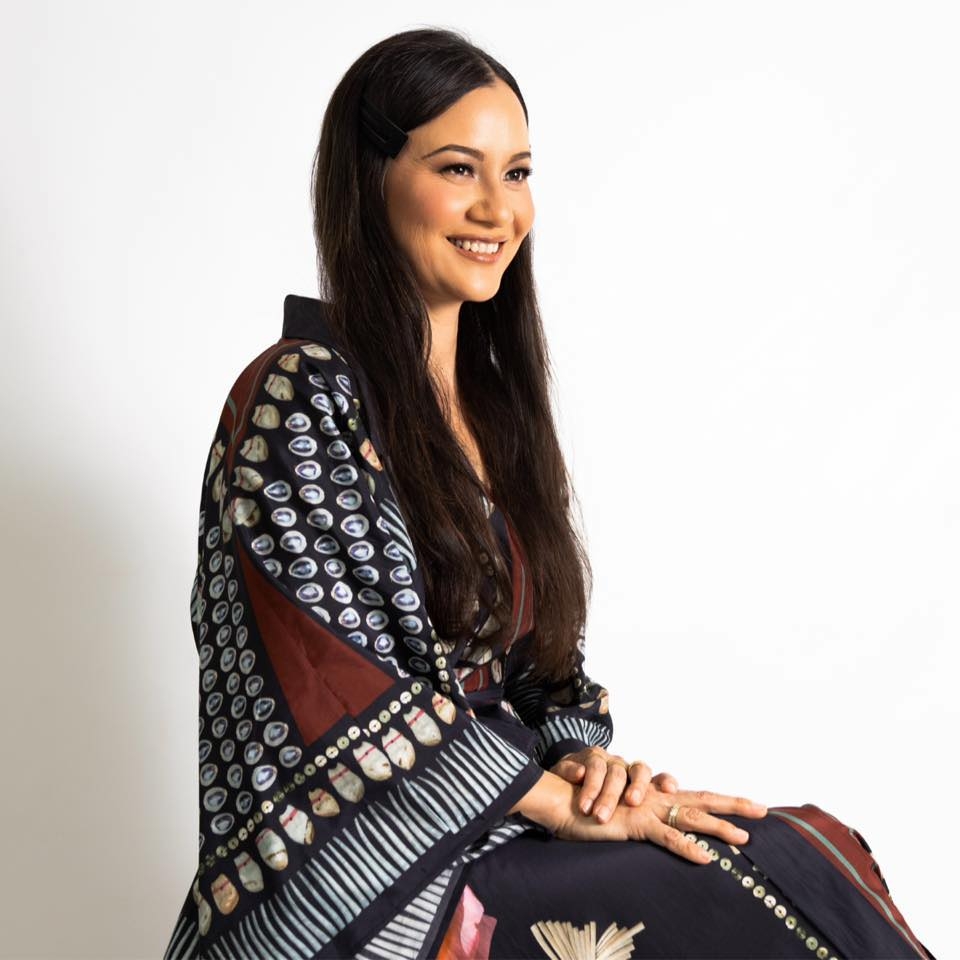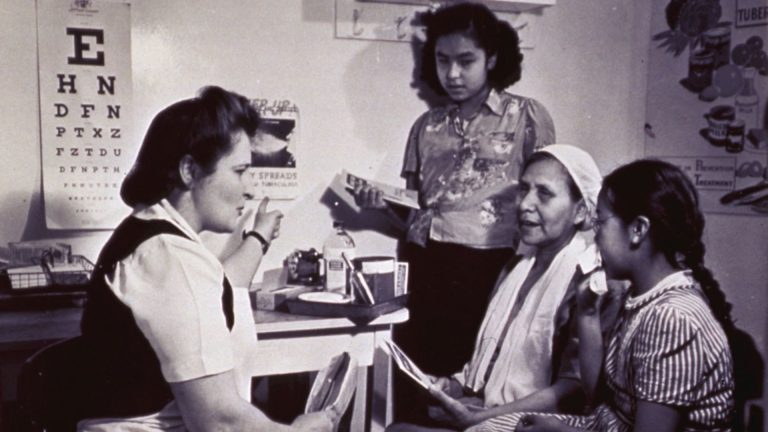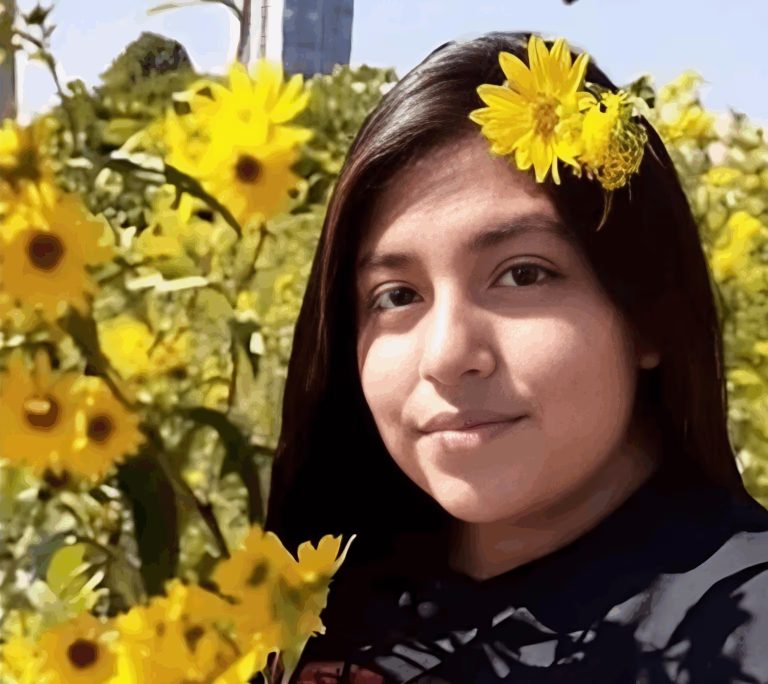Podcast: Play in new window | Download | Embed
This year’s New York Fashion Week made history by featuring the first Native American designer.
The show coincided with the first of its kind Indigenous New York Fashion Week.
Reporter Carolann Duro (Maara’yam [Serrano] and Kumeyaay descendant) has more.
Jamie Okuma (Shoshone Bannock, Wailaki, and member of the La Jolla Band of Indians) is known for her intricate beadwork and clothing designs.
At New York Fashion Week, Okuma showcased pieces adorned with graphics of dentalium shells, flowers, elk teeth, and butterflies. The models walked in dresses made of silk, bamboo, and cotton.
Okuma is the very first Native American designer to be included in New York Fashion Week.
Nearby, the inaugural Indigenous New York Fashion Week was hosted by Relative Arts, an Indigenous fashion community space. The show featured 25 Indigenous artists from all over the world.
Kinsale Drake (Diné) is the founder of NDN Girls Book Club, modeled for the runway.
“The energy was just something that was so exciting and buzzy. It felt like you can’t erase us. We’re here and now we’re also in New York
on Lenape land.”
Drake points out how fashion week has long included tribal designs.
“We saw recently a rise of Americana or western fashion, which derives from the southwest aesthetics which are Indigenous.”
Details about the next Indigenous New York fashion week are still to come.
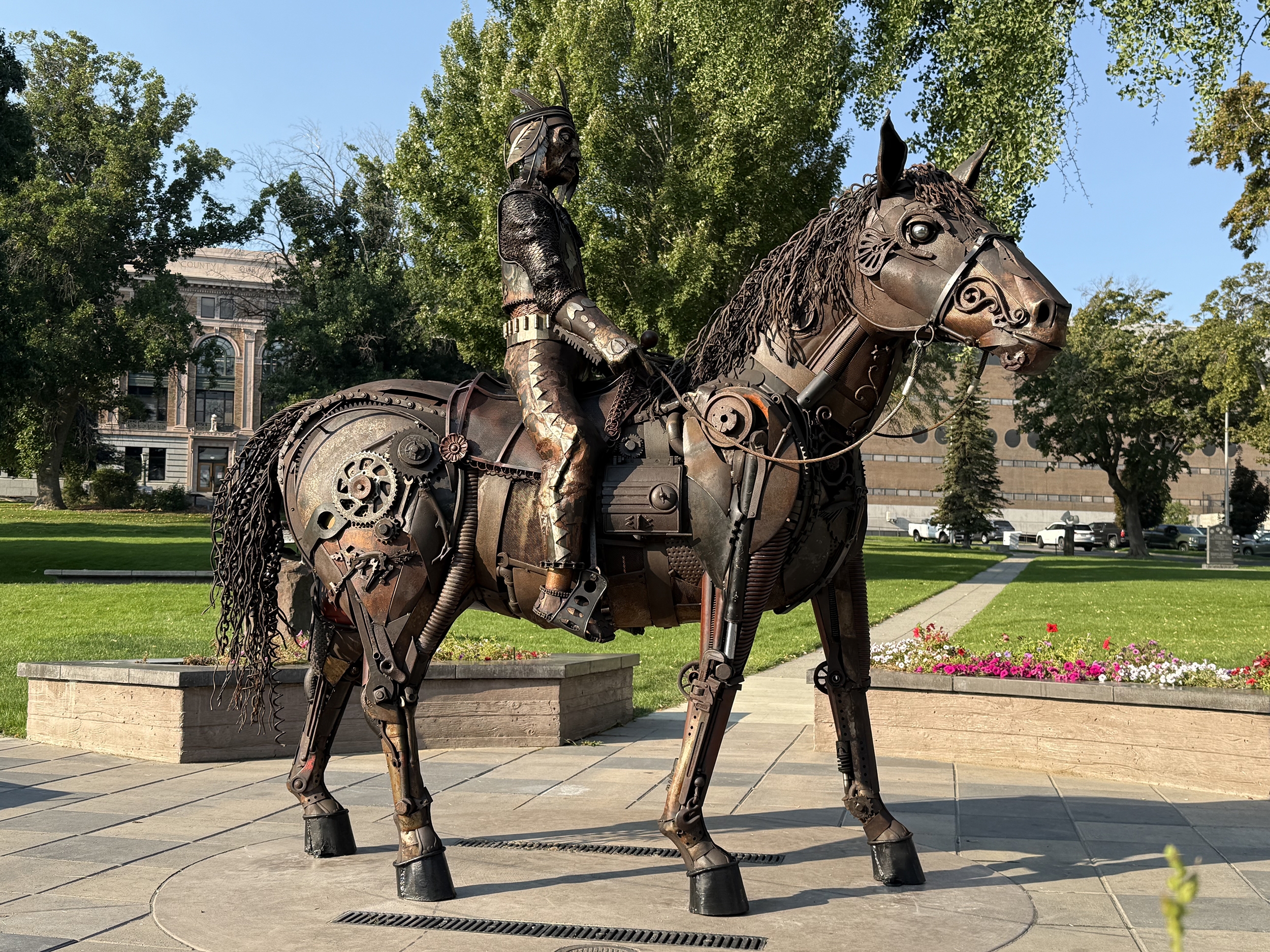
(Courtesy Jud Turner)
A sculpture honoring the last Chief of the Wenatchi tribe has been delivered and erected at a developing art installation in Wenatchee, Wash.
The piece depicts P’Squosa Chief John Harmelt, also known as Crow Song, and is made of repurposed metal parts.
Sculptor Jud Turner of Eugene, Oreg. was asked to do it for the Tribal Council of Wenatchee, which shows Chief Harmelt on horseback.
Turner says it’s the most meaningful public piece he’s ever done, but he didn’t take the invitation lightly when he first talked to city officials about the sculpture.
“I said, ‘You know I’m a white guy, right? Like you’re asking me to do a tribal subject for a tribe, and I want to make sure that you know that I’m non-Native, and that is okay with the tribe, and that you’re aware of that.’ And he said ‘Oh yeah, we understand that.’ And I said, ‘I can only do this with tribal oversight and guidance. I’m handling somebody else’s cultural traditions, and I want do that as carefully and respectfully as I can.’”
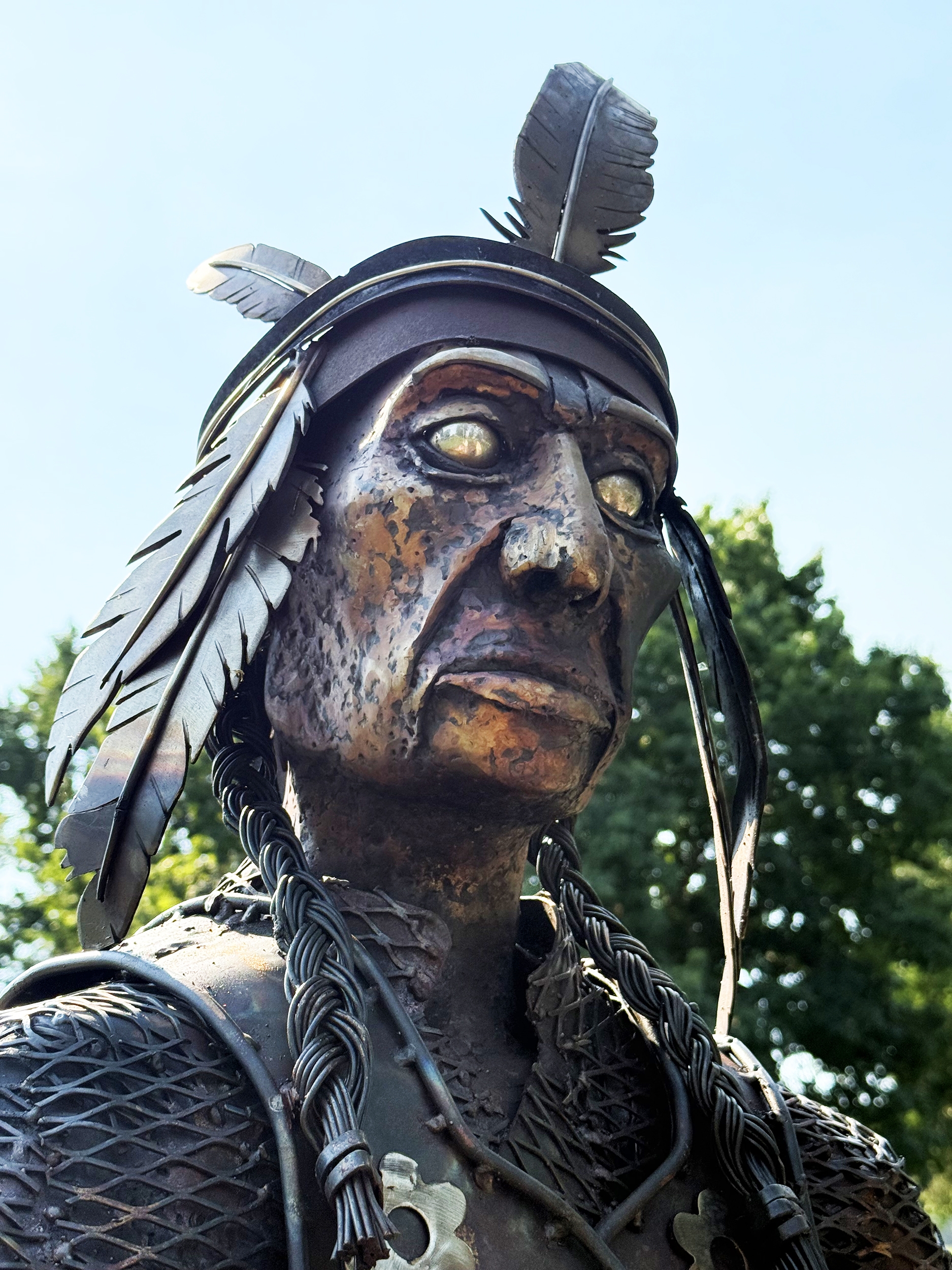
(Courtesy Jud Turner)
One special item on the Harmelt sculpture is a symbol on the back of his vest, which is a representation of his traditional name, Crow Song.
It’s a black metal crow with swirls protruding from its beak. Turner says musical notes would have been a Western treatment and he wanted something more Native.
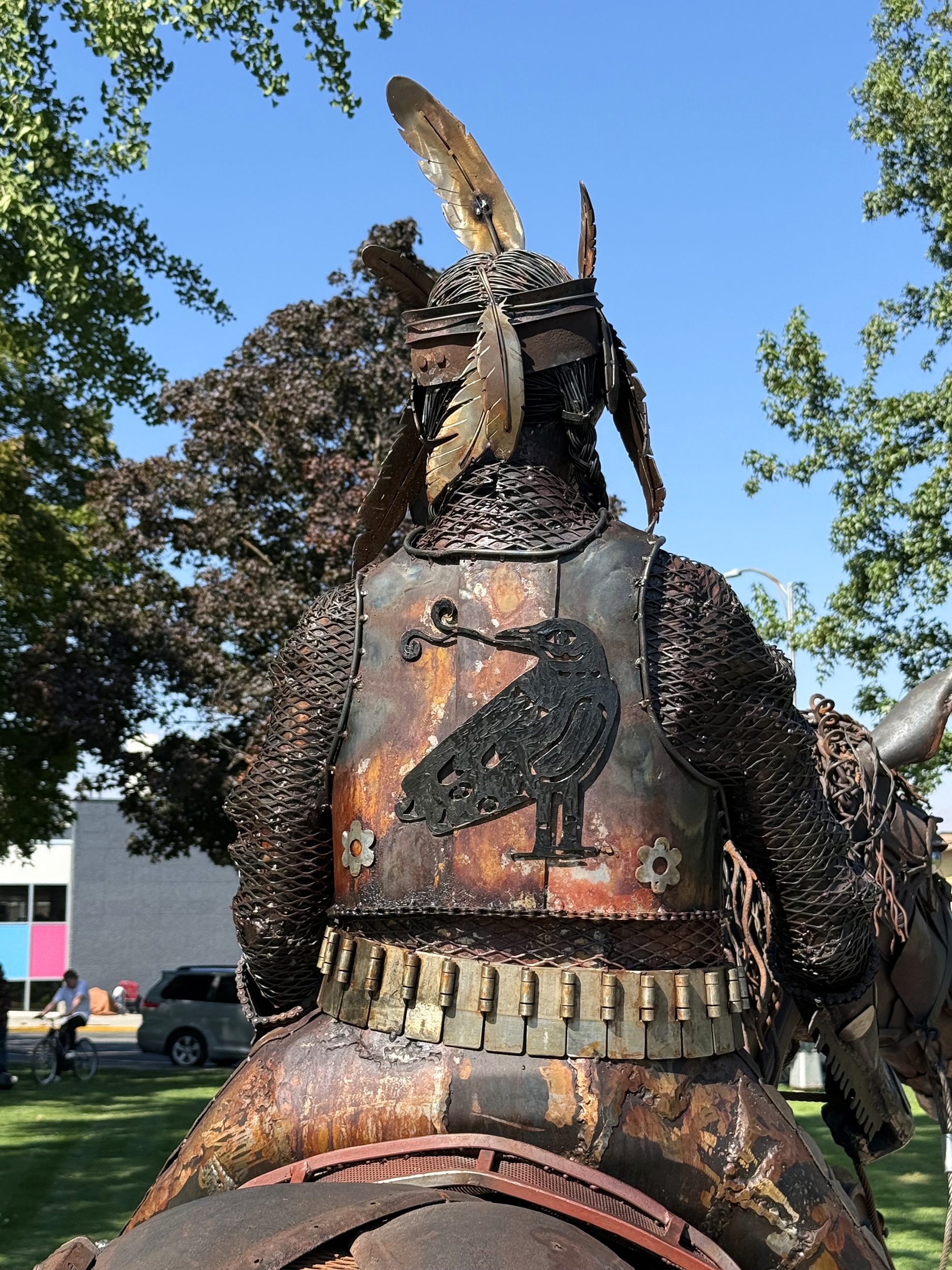
(Courtesy Jud Turner)
More pieces will be installed at Wenatchee’s Memorial Park to create “P’squosa Plaza.”
These remaining works will be done by Swede Albert of the Colville Confederated Tribes.
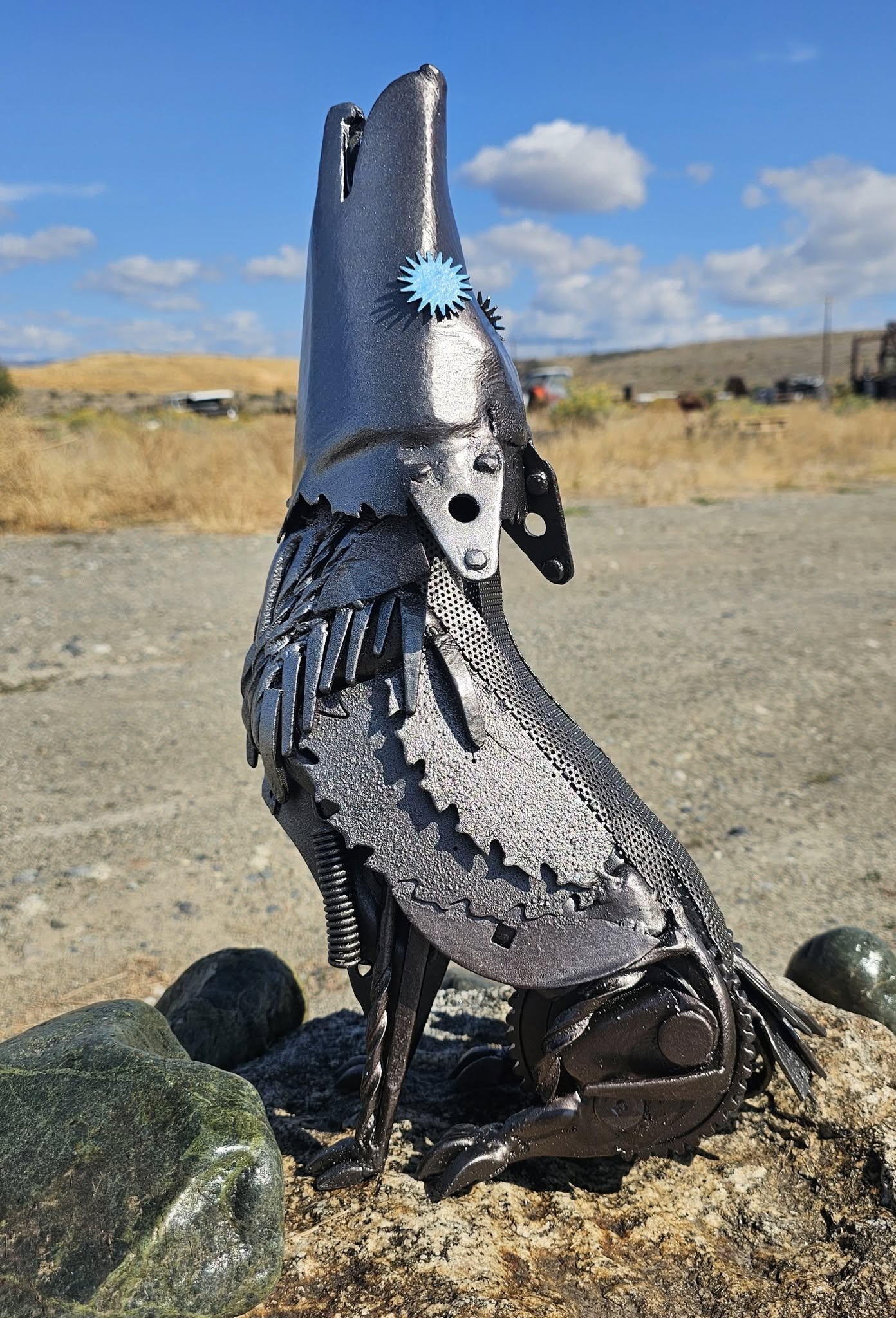
Coyote by Swede Albert.
His pieces will be interpretive signs featuring animals and landmarks relevant to Wenatchee legends.
“One of the stories is it is about two different bears, so I already made a grizzly bear and then there’s a little black bear that I’m making that’s going along with it. And then the coyote and the salmon, they go together in one story. There’s also a two owls sister story and I have two owls made for that. One more fabricated story that I’m making, and it’s for the Wenatchee peoples, they asked me to do like a representation of a basket, like a berry basket. They were really prominent in basket-making, weaving, and that’s a lot of the artifacts that are still left.”
As a Wenatchee descendant, Albert says it’s deeply meaningful for him to work on this project.
The P’Squosa Plaza’s dedication ceremony will be held October 13.
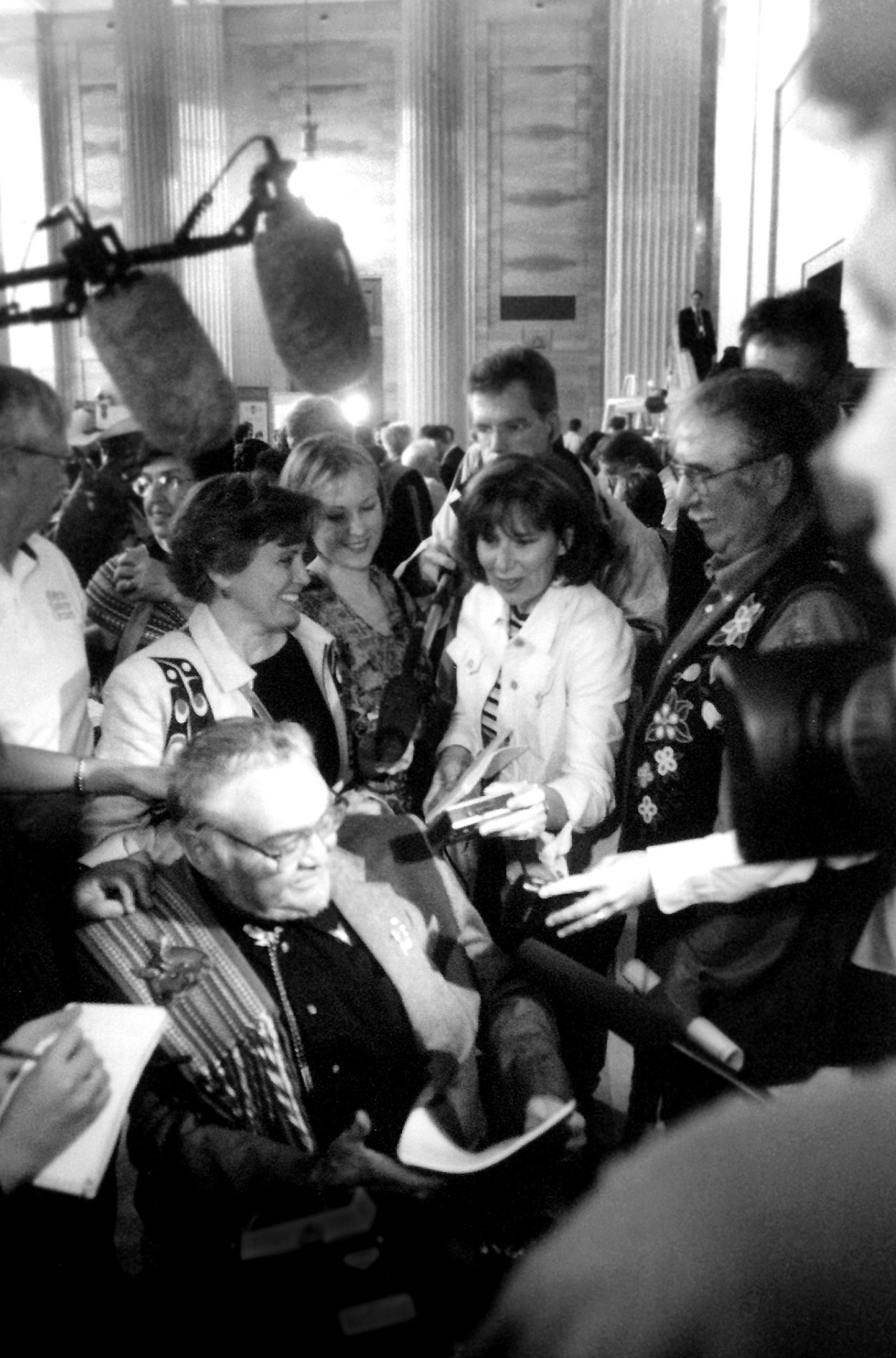
(Courtesy Métis Government)
And on this day in 2003, the Canadian Supreme Court handed down a landmark ruling which said the Métis People of current-day Ontario are a distinct Indigenous people with their own customs, identity, and traditions well before Canada became a country and Ontario became a province.
The ten-year legal battled started with a Métis father and son, Steve and Roddy Powley, who refused to pled guilty to hunting moose without a license because of their tribal identities.
The ruling empowered Métis people across Canada and September 19 is called Powley Day.
Get National Native News delivered to your inbox daily. Sign up for our daily newsletter today.
